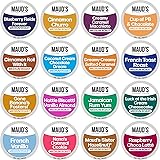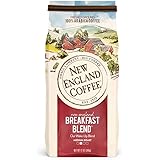Ace Your Barista Trial: Essential Skills to Land Your First Barista Job
Landing your first barista job can feel like a daunting task. You’ve sent out applications, perhaps even secured a trial shift, only to hear those disheartening words: “Sorry, you’re not quite up to our standard.” It’s a common experience for many aspiring coffee makers, and it often comes down to a few core areas where beginner baristas might struggle.
The video above touches upon critical aspects that can make or break your chances. This article will dive deeper into those vital barista skills, providing a more comprehensive guide to help you not just understand the theory, but truly master the practical application. We’ll explore everything from the foundational espresso techniques to the nuances of customer service, ensuring you walk into your next barista trial with confidence and competence.
Mastering the Espresso Shot: Tamping Techniques for Barista Success
The espresso shot is the heart of every coffee drink. A perfect shot starts long before the machine even hums – it begins with your tamping technique. Imagine building a house: a strong foundation is essential for stability. Tamping is that foundation for your espresso. If it’s uneven or too light, your coffee will taste off, like a recipe with missing ingredients. The water won’t extract flavors consistently, leading to a weak or bitter brew.
One common mistake, as highlighted in the video, is forgetting to tamp entirely, or tamping incorrectly. It’s easy to get flustered during a trial. But remember, a quick, precise tamp is crucial. After filling your portafilter basket with freshly ground coffee, gently tap it on a flat surface to settle the grounds. Then, place the tamper flat on top. Apply firm, even pressure straight down. Think of it like pressing a stamp evenly onto paper. The goal is a perfectly level, compacted puck of coffee. After tamping, give the top of the basket a quick wipe to remove any loose grounds. This ensures a clean seal with the group head and a clean coffee station, which always impresses an employer.
Beyond the Basics: Essential Coffee Knowledge for Aspiring Baristas
Knowing how to make a coffee is one thing; understanding *what* you’re making is another. Employers expect you to be familiar with the common coffee menu items, especially in a busy café environment. It’s like a chef knowing the difference between simmering and boiling; small details make a big impact on the final product and customer satisfaction.
In Australia, for instance, you’ll encounter a standard set of drinks. Beyond the ever-popular latte and cappuccino, you should know:
- Flat White: Similar to a latte, but with less froth and a velvety texture, often poured with thin microfoam. It’s about a smooth, strong coffee taste.
- Long Black: Hot water first, then a double shot of espresso poured on top. This preserves the crema and offers a robust flavor.
- Short Black (Espresso): A single shot of espresso, the purest form.
- Macchiato: An espresso “marked” with a dash of foamed milk. It’s a strong coffee with a hint of creaminess.
- Piccolo Latte: A small latte, usually a single espresso shot with textured milk, served in a small glass.
- Mocha: A latte with chocolate added, a popular choice for those with a sweet tooth.
Picking the right cup size and type is also vital. A short black in a tall mug looks lost. A cappuccino served in a latte glass won’t hold its iconic foam. Each drink has an ideal presentation that signals your professionalism and attention to detail. Take time to learn these distinctions; it shows you understand coffee, not just how to press buttons.
The Art of Efficiency: Perfecting Milk Frothing and Pouring for Multiple Orders
In a bustling cafe, efficiency is paramount. Imagine a rush hour at a train station – everything needs to run on time. For a barista, this means mastering the art of making multiple drinks simultaneously, especially when they use the same type of milk. Steaming milk for each coffee individually is a time sink and a recipe for serving lukewarm drinks. The video wisely points out that the first coffee will get cold if you work too slowly.
The professional approach involves using a larger jug to steam enough milk for two or more coffees at once. Once perfectly frothed, you then divide the milk. A key trick, often overlooked, is knowing which drink to pour first. Cappuccinos, with their generous layer of foam, require the frothy milk right away. If you wait, the foam will separate, and you’ll end up with a flat cappuccino. So, pour the cappuccino first, then give the remaining milk a good swirl to reintegrate the foam, and finally, pour your latte.
This technique isn’t just about speed; it’s about consistency. Steaming a larger volume of milk allows for better temperature control and a more even texture. It showcases your ability to think ahead and manage your workflow, qualities highly valued by any employer.
Latte Art for Beginners: Simple Designs, Big Impact in Your Barista Interview
Latte art is the flourish, the final touch that elevates a coffee from good to great. During a barista trial, the temptation might be to attempt an elaborate swan or rosetta, especially if you’ve seen impressive videos online. However, as the video wisely advises, attempting complex latte art when you’re nervous or still learning is often a setup for failure. It’s like trying to run a marathon before you’ve mastered walking; consistency beats complexity every time.
For beginners, focus on simple, clean designs. A classic heart or a basic tulip demonstrates control over your milk and pouring technique without risking a messy, failed attempt. These designs still show skill and care, and more importantly, they are achievable under pressure. Practice these until they are second nature. An employer wants to see that you can consistently produce a well-made coffee with a neat presentation, not a haphazard attempt at a complicated pattern. A perfectly formed heart is far more impressive than a lopsided, ambiguous blob.
Building Your Barista Confidence: Shine Bright in Every Job Interview
Skills are critical, but confidence can be the secret ingredient that tips the scales in your favor. The video narrator shares a relatable experience of shaking and messing up latte art due to nerves. This highlights a universal truth: stress impacts performance. But even if your skills aren’t perfectly polished, an employer might still hire you if they see potential and a positive attitude, much like a coach picks a player with grit and passion, even if their technique isn’t flawless yet.
Confidence is a magnet for positive perception. When you stand tall, make eye contact, and smile, it communicates enthusiasm and capability. It suggests you’re teachable and resilient. Practice calming techniques before your trial: deep breaths, positive self-talk, visualizing success. Think of it as mentally preparing for a stage performance. You might not hit every note perfectly, but if you perform with conviction, the audience (your potential employer) will be more forgiving and see your true spirit. Believe in your ability to learn and improve, and let that belief shine through.
Your Path to a Barista Career: Practical Steps for Aspiring Coffee Makers
Getting your first barista job is a journey, not a single leap. The video provides excellent beginner tips that serve as a solid roadmap. Here’s a deeper look into those foundational steps:
- Start with Junior or All-Rounder Positions: Don’t immediately aim for head barista roles. Many cafes offer junior barista or “all-rounder” positions, where you might start on customer service, cleaning, or food prep, and gradually learn coffee skills during quieter periods. This is invaluable on-the-job training. It’s like an apprenticeship where you learn the ropes in a supportive environment.
- Practice, Practice, Practice: This cannot be overstated. Get access to an espresso machine if you can – at home, through a friend, or even a local community center. Repetition builds muscle memory and refines technique. The more you practice tamping, steaming, and pouring, the more natural it becomes. Consistent practice is the bedrock of strong barista skills.
- Seek Formal Training or Mentorship: A dedicated barista course can provide structured learning and valuable certification. Alternatively, finding a mentor – an experienced barista willing to share knowledge – can be incredibly beneficial. Their insights, feedback, and real-world tips are often priceless. Think of it as having a personal guide to navigate the complexities of coffee making.
- Leverage Online Resources: The internet is a treasure trove of information. YouTube channels, like Barista Bee (as mentioned in the video), offer visual demonstrations and detailed tutorials that you can pause, rewind, and re-watch. These videos can clarify techniques, inspire new approaches, and help you troubleshoot common problems from the comfort of your home. Use these resources to continually refine your barista skills and stay updated on industry trends.
By focusing on these core areas, you can significantly boost your chances of landing your first barista job. Remember, every master barista started as a beginner. With dedication, practice, and the right approach, you’ll soon be crafting exceptional coffees with confidence and skill, ready for your next barista trial.







